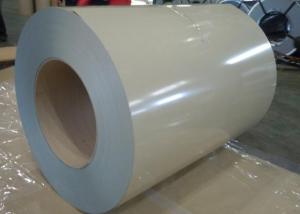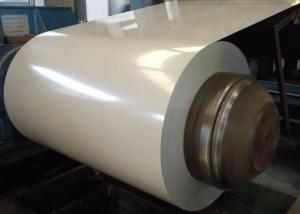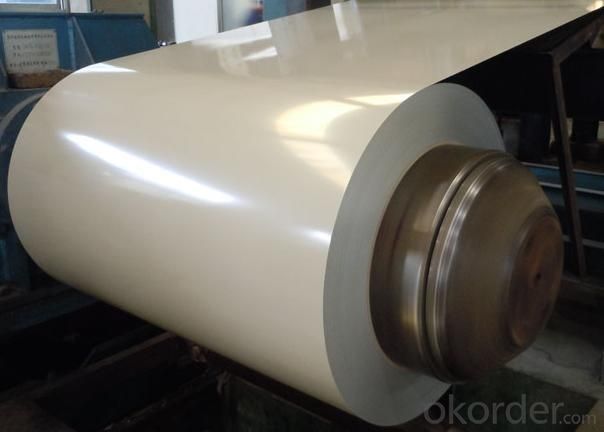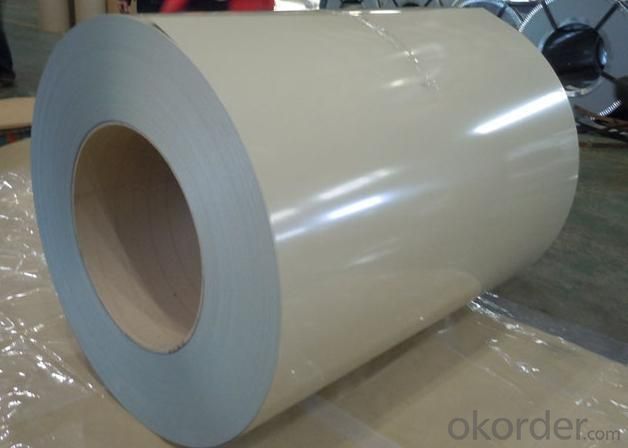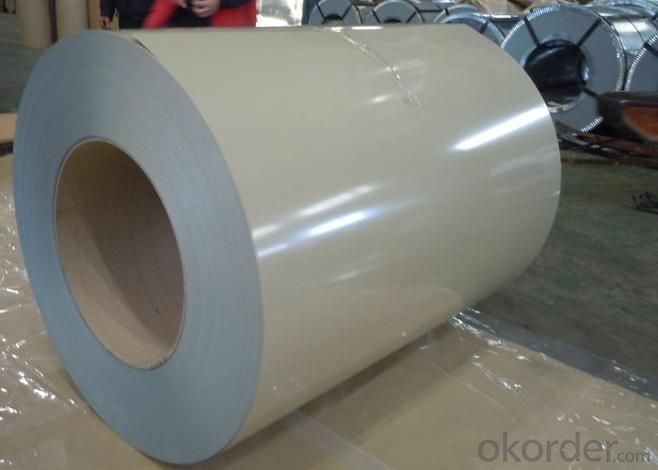Hot Selling Prepainted Aluzinc Steel Coil-ASTM A755M
- Loading Port:
- China Main Port
- Payment Terms:
- T/T or L/C
- Min Order Qty:
- 50mt m.t.
- Supply Capability:
- 100,000 mt/year m.t./month
OKorder Service Pledge
OKorder Financial Service
You Might Also Like
Hot Selling Prepainted Aluzinc Steel Coil-ASTM A755M
With GL as base metal, after pretreatment (degrease and chemical treatment) and liquid dope with several layers of color, then after firing and cooling, finally the plate steel is called pre-painted aluzinc steel. Pre-painted Aluzinc steel is good capable of decoration, molding, corrosion resistance. It generally displays superior workability, durability and weather resistance.
General Information Of Hot Selling Prepainted Aluzinc Steel Coil-ASTM A755M
|
Thickness |
0.23-1.2mm (BMT) |
|
Width |
900-1250mm |
|
Alu-zinc Coating |
50-150g/m2 |
|
Internal Diameter |
508mm or 610mm |
|
Color |
According to RAL color fan |
|
Coil Weight |
4-8MT |
|
Quality |
Commercial and structural quality |
|
Paint |
Polyester paint for topside, epoxy for reverse |
|
Standard |
JIS G 3322, ASTM A755M, EN 10169 |
|
Package |
Full wrapped with anti-damped paper inside, iron sheet wrapped outside, and bundled by iron strips |
|
Base Steel Grade |
SGCC, SGCD, DX51D+Z DX52D+Z; S200GD, S220GD, S280GD,S350GD,CS,FS,SS |
Technical Data Of Hot Selling Prepainted Aluzinc Steel Coil-ASTM A755M
|
Chemical Composition |
C |
Si |
Mn |
P |
S |
|
0.04-0.06% |
0.01-0.03% |
0.18-0.22% |
0.014-0.016% |
0.006%-0.009% |
Technical Data Of Hot Selling Prepainted Aluzinc Steel Coil-ASTM A755M
|
Yield Strength |
(Mpa) 280-320 |
|
Tensile Strength |
(Mpa) 340-390 |
|
Elongation |
20%-30% |
|
Reverse Impact |
9J |
|
T-bending |
≥2T |
|
Pencil Hardness |
≥2H |
|
Duration Of Salt Spray Test |
500 H |
|
Bending At 180 Degree |
No crack, purling and fraction |
Application Of Hot Selling Prepainted Aluzinc Steel Coil-ASTM A755M
It can be widely used in transportation, light industry, civil usage and farming. It is also the perfect building material in construction for making steel roofing, corrugate sheet, sandwich panel for wall or roofing, facade wall,shutters and home appliance.
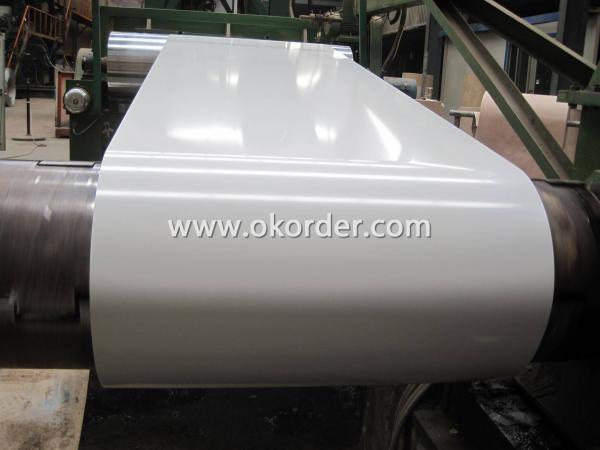
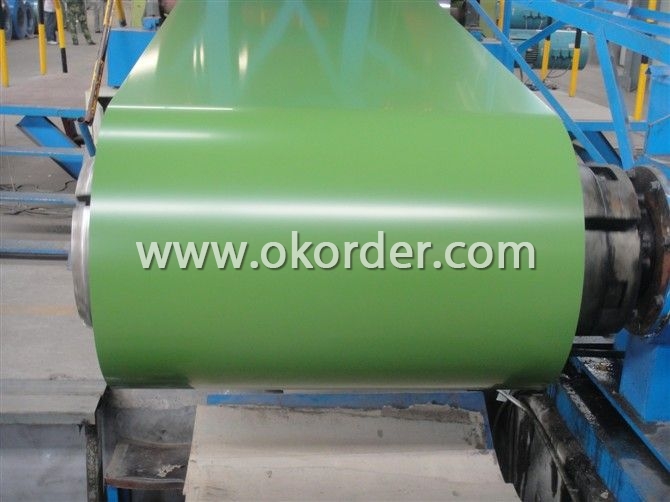
Packaging & Delivery
1. Packaging Detail:
The packing of coils consists of anti-damp paper, PVC film, hardboard paper, steel box, strapped with steel strips, fitted with locks and edge protectors and guarantees the optimal condition of the delivered goods. Each coil can be additionally fitted with wooden/steel skids(eye to the side) or wooden pallets(eye to the sky).
2. Delivery Detail: As customer requested
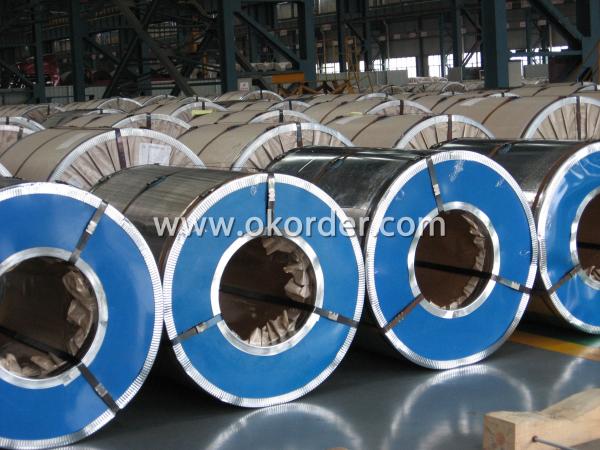
- Q: I'm looking for a good source as to the 'structural formula' of steel. I'm not quite sure if that's what it's actually called, but here's a link to what I'm looking for.
- That's a very good question. What you need to do is run down to your local university and sign up for a undergraduate degree in Civil Engineering and after you finish that (4 to 5 years) then you need to sign up for a masters degree in Structural Engineering (2 to 3 years). Then, get yourself a structural engineering job and in 4 years you will be able to test to become a Professional Engineer. Whew, after that you will get paid very well as a tower designer.
- Q: Does anyone know the lyrics to steel driving man by Dailey and Vincent. I would really appreciate it
- watch man of steel full movie online free adf.ly/dfxYD
- Q: Im getting a new guitar soon, and it has steel strings. ive heard that nilon strings are better? thanks:)
- Nylon strings aren't better The very notion of such is absurd. They're different. They sound different and feel different. Different guitars are designed for different types of strings. Nylon string guitars are most commonly associated with classical music (you'll never see a real classical musician play a steel string guitar) Whoever told you that nylon strings are better should be ignored altogether. They're obviously not a good source of information.
- Q: I'm a Hobbyist and want to Build my own axial-flow jet engine,can I use steel as the Turbine blades instead of Titanium which I can't get easily?? What about the other parts I can use for...?!
- Yes you can use steel but you will want to use super alloys like hastaloy and inconel. These withstand the heat in the combustion areas. These are the actual materials used in these stages. If you only want your engine to have a service life of a few hours a conventional hot work steel like H-13 will probably be OK Blades are investment cast in foundries that carefully control the rate of cooling to create a very uniform grain structure
- Q: I'm doing a project on stainless steel dining utensils and its a little more difficult than i thought it would be. There are no sites on the web that tells the creator or when it was first used. There's no sites that that i can see of that talk about the history of stainless steel dining utensils, only dining utensils in general. Please help, i can't change my project now ):
- The development of 18/10 stainless steel was the brainchild of Harry Brearley who, in 1913, was working on a project to prevent rifle barrels from corroding so much during use. His analysis of the rifle barrels involved having to dissolve them in acid but, by chance, he noticed that steel which had a high chromium content did not dissolve in the acid. He experimented with varying proportions of chromium and finally produced a stainless steel with 12.8% chromium. He moved to Thos Firth Sons in 1914 and commercial production of stainless steel cutlery began. Refinements were necessary because early versions of stainless steel knives were harder to produce and polish, and they would not cut as well as the existing knives.
- Q: How are steel coils coated for color and aesthetics?
- Steel coils are coated for color and aesthetics through a process called coil coating. This involves applying a layer of paint or coating onto the steel coil surfaces, which is then cured and bonded to create a uniform and durable finish. This coating process not only enhances the appearance of the steel coils but also provides protection against corrosion and other environmental factors, making them suitable for various applications in industries such as construction and automotive.
- Q: What are the environmental impacts of producing steel coils?
- The production of steel coils has several environmental impacts. Firstly, it involves the extraction of iron ore, which requires mining activities. These mining operations can lead to deforestation, habitat destruction, and soil erosion. Additionally, the extraction and processing of iron ore require large amounts of energy, contributing to greenhouse gas emissions and air pollution. Furthermore, the production of steel coils involves several stages, such as smelting and refining, which are energy-intensive and emit significant amounts of carbon dioxide, sulfur dioxide, and nitrogen oxides. These emissions contribute to air pollution, acid rain, and climate change. Water consumption is another notable environmental impact. Steel production requires large volumes of water for cooling and processing purposes. This high water demand can strain local water resources and potentially lead to water scarcity or pollution if not managed properly. Moreover, the steel industry generates substantial amounts of waste and by-products, such as slag, dust, and sludge. Proper disposal and treatment of these waste materials are crucial to prevent soil and water contamination. Lastly, transportation plays a role in the environmental impact of steel coil production. The transportation of raw materials and finished products can contribute to carbon emissions and air pollution, especially if long distances are involved. To mitigate these environmental impacts, various measures can be taken. Implementing more efficient production processes, such as recycling and using renewable energy sources, can reduce energy consumption and emissions. Additionally, improving waste management practices, investing in water conservation technologies, and optimizing transportation logistics can help minimize the environmental footprint of steel coil production.
- Q: What are the main factors that affect the surface quality of steel coils?
- The main factors that affect the surface quality of steel coils include the quality of raw materials used, the manufacturing process employed, the level of cleanliness and maintenance of equipment, the presence of contaminants or impurities, the coating or finishing applied, and the handling and storage conditions.
- Q: How are steel coils used in the production of steel plates?
- The production of steel plates heavily relies on steel coils, which play a crucial role. These coils serve as the primary raw material and are vital in the manufacturing process. The initial step involves creating steel coils by heating and cooling molten steel to form thin, flat strips. These strips are then further processed in a rolling mill, where they undergo a series of rollers to decrease their thickness and increase their length. Once the desired dimensions are achieved, the steel coils are uncoiled and straightened. This involves passing them through a machine to eliminate any curvature or deformities, ensuring that the strips are completely flat. Subsequently, the straightened coils are cut into specific lengths to match the required dimensions of the steel plates. After being cut, the coils undergo another significant step called leveling. This step involves passing the strips through a leveling machine to remove any residual stress or warping that may have occurred during the production process. Leveling guarantees that the steel plates possess a consistent thickness and are free from any distortions, making them suitable for various applications. When the leveling process is completed, the steel coils are finally transformed into steel plates. These plates can be further processed according to the desired end-use. They may undergo additional treatments like heat treatment, surface finishing, or coating to enhance their strength, durability, and resistance to corrosion. To summarize, steel coils serve as the starting point in the production of steel plates. They undergo several essential steps, including rolling, uncoiling, straightening, cutting, and leveling, to convert them into flat and uniform steel plates. These plates can then be further processed and tailored for a wide range of applications in industries such as construction, automotive, shipbuilding, and manufacturing.
- Q: What are the different types of steel coil surface finish treatments?
- There are several different types of steel coil surface finish treatments available, each serving a specific purpose and providing unique characteristics. Some common types include: 1. Hot Rolled: This is the most basic and common type of steel coil surface finish treatment. It involves heating the steel above its recrystallization temperature and then rolling it to achieve the desired thickness. This process results in a rough surface texture. 2. Cold Rolled: Unlike hot rolled, cold rolled steel coil undergoes a process where it is rolled at room temperature. This treatment produces a smoother surface finish with improved dimensional accuracy and tighter tolerances. 3. Galvanized: Galvanization is a process where a protective zinc coating is applied to the steel coil surface. This treatment not only enhances the appearance but also provides excellent corrosion resistance, making it suitable for outdoor applications. 4. Electro-galvanized: Similar to galvanized steel, electro-galvanized steel coil is coated with a zinc layer. However, the coating is applied through an electroplating process, resulting in a thinner and more controlled coating. 5. Pre-painted: Pre-painted steel coil surface finish treatment involves applying a layer of paint or other protective coating before the product is delivered to the customer. This treatment enhances the appearance and provides additional protection against corrosion. 6. Stainless Steel: Stainless steel coil surface finish treatment involves passivating the steel to remove any impurities or contaminants on the surface. This process improves the resistance to corrosion and gives the steel a clean and smooth appearance. 7. Embossed: Embossing is a surface finish treatment where a pattern or design is pressed into the steel coil surface. This treatment enhances the aesthetics of the product and can provide additional grip or texture depending on the specific design. 8. Brushed: Brushing is a treatment where a fine abrasive material is used to create a brushed pattern on the steel coil surface. This finish provides a unique texture and can help mask scratches or other imperfections. These are just some of the various types of steel coil surface finish treatments available. The choice of treatment depends on the specific requirements of the application, such as appearance, corrosion resistance, or functionality, and it is important to select the most appropriate treatment to ensure the desired outcome.
1. Manufacturer Overview
| Location | Jiangsu, China |
| Year Established | 2003 |
| Annual Output Value | US$1 Million - US$2.5 Million |
| Main Markets | Mid East;Western Africa;Sourth America;southeastern Asia |
| Company Certifications | ISO9001:2000 |
2. Manufacturer Certificates
| a) Certification Name | |
| Range | |
| Reference | |
| Validity Period |
3. Manufacturer Capability
| a) Trade Capacity | |
| Nearest Port | Shanghai Port, China |
| Export Percentage | 41% - 50% |
| No.of Employees in Trade Department | 21-50 People |
| Language Spoken: | Chinese, English |
| b) Factory Information | |
| Factory Size: | 10,000-30,000 square meters |
| No. of Production Lines | Above 10 |
| Contract Manufacturing | OEM Service Offered |
| Product Price Range | Average |
Send your message to us
Hot Selling Prepainted Aluzinc Steel Coil-ASTM A755M
- Loading Port:
- China Main Port
- Payment Terms:
- T/T or L/C
- Min Order Qty:
- 50mt m.t.
- Supply Capability:
- 100,000 mt/year m.t./month
OKorder Service Pledge
OKorder Financial Service
Similar products
Hot products
Hot Searches
Related keywords
